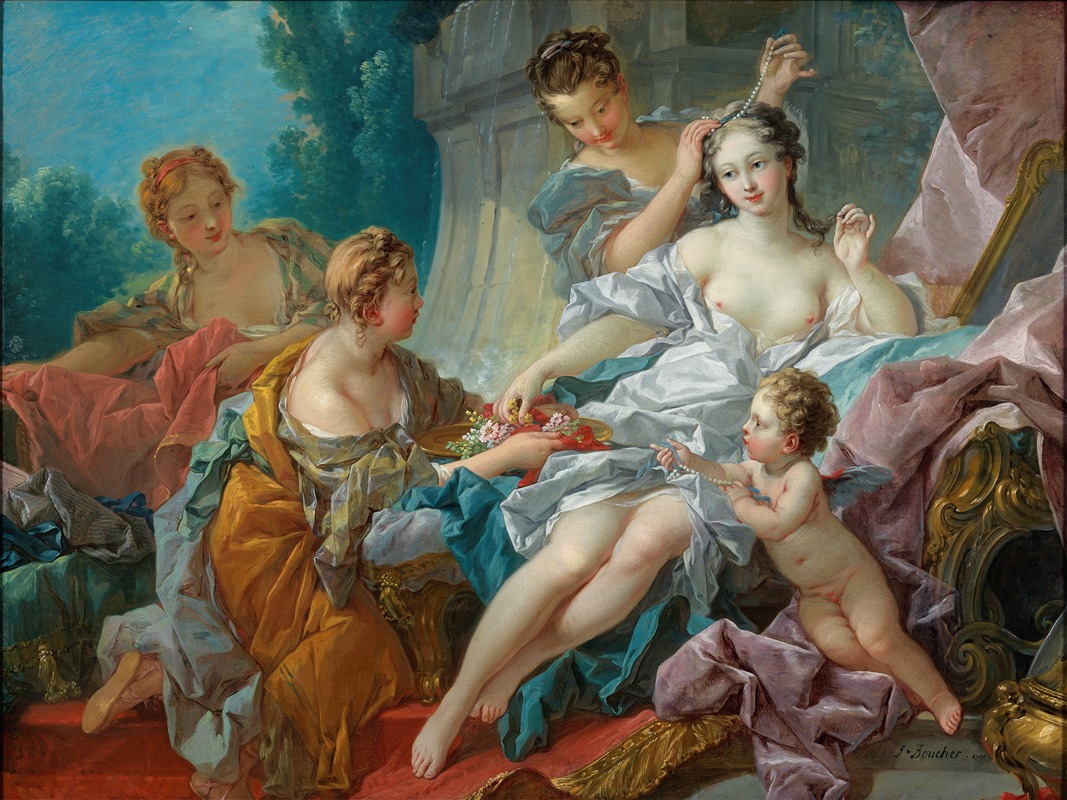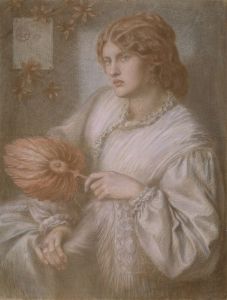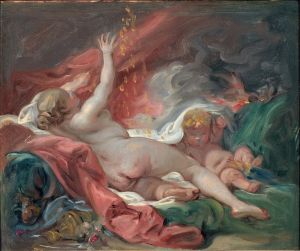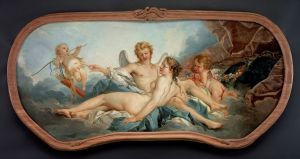
The Toilet of Venus
A hand-painted replica of François Boucher’s masterpiece The Toilet of Venus, meticulously crafted by professional artists to capture the true essence of the original. Each piece is created with museum-quality canvas and rare mineral pigments, carefully painted by experienced artists with delicate brushstrokes and rich, layered colors to perfectly recreate the texture of the original artwork. Unlike machine-printed reproductions, this hand-painted version brings the painting to life, infused with the artist’s emotions and skill in every stroke. Whether for personal collection or home decoration, it instantly elevates the artistic atmosphere of any space.
François Boucher's "The Toilet of Venus" is a renowned Rococo painting created in 1751. Boucher, a prominent French painter of the 18th century, was known for his idyllic and voluptuous depictions of classical themes, pastoral scenes, and mythological subjects. "The Toilet of Venus" exemplifies his mastery in portraying the elegance and sensuality characteristic of the Rococo style.
The painting was commissioned by Madame de Pompadour, the influential mistress of King Louis XV of France, who was a significant patron of the arts and a personal supporter of Boucher. Madame de Pompadour's influence at court and her taste for the arts played a crucial role in the flourishing of the Rococo style during this period. Boucher's work, including "The Toilet of Venus," often reflected the opulent and decorative tastes of the French aristocracy.
"The Toilet of Venus" depicts the Roman goddess Venus at her toilette, a theme that was popular in art for its combination of beauty, intimacy, and mythology. In the painting, Venus is shown seated, surrounded by cherubs and attendants who assist her in her grooming. The scene is set in a luxurious and serene environment, with soft, flowing drapery and a delicate color palette that enhances the sensuality and grace of the composition. Boucher's use of light and shadow, along with his attention to detail in the textures of skin, fabric, and surrounding objects, contributes to the painting's overall sense of harmony and elegance.
The painting is notable for its portrayal of Venus as both a divine and approachable figure, embodying the Rococo ideals of beauty and charm. Boucher's depiction of Venus is imbued with a sense of playful eroticism, a characteristic feature of his work that appealed to the tastes of his patrons. The cherubs, often seen as symbols of love and desire, add to the painting's romantic and whimsical atmosphere.
"The Toilet of Venus" is housed in the Metropolitan Museum of Art in New York City, where it remains a significant example of Boucher's contribution to the Rococo movement. The painting is appreciated not only for its aesthetic qualities but also for its reflection of the cultural and social dynamics of 18th-century France. Boucher's work, including this piece, played a pivotal role in defining the visual language of the Rococo era, characterized by its lightness, elegance, and decorative charm.
Overall, "The Toilet of Venus" by François Boucher is a quintessential representation of Rococo art, capturing the essence of beauty, luxury, and the playful spirit of the time. Through his skillful use of color, composition, and subject matter, Boucher created a timeless work that continues to be celebrated for its artistic and historical significance.


















